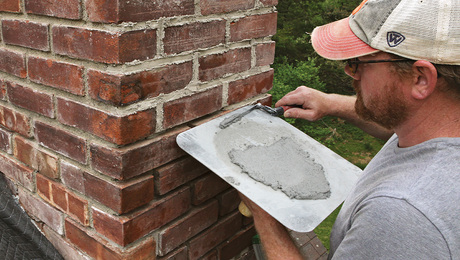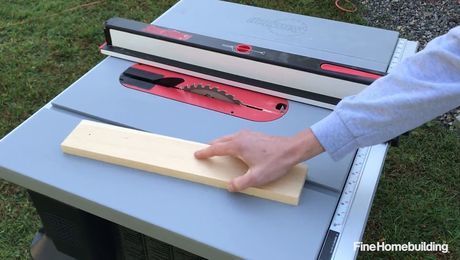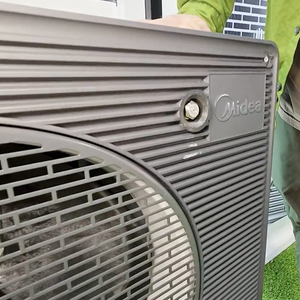Fixing water shutoff valves..need advice
Well, as Shep mentioned in another post, I really hate plumbing jobs as well…at least when they are unplanned. For some odd reason, the plastic pipes under my pedestal sink suddenly started leaking. Not sure if the sink was rocking and just caused the connections to break or what.
Anyway, my problem starts with the shutoff valves not working under the sink. No matter how much I turn the knobs, the shutoff valve is not closing. I seem to have this problem with other shutoff valves as well.
The ones under the pedestal sink have the screws tightened but the handles don’t seem to grab onto anything.
What can I do to remedy this WITHOUT replacing the hole valve?
How do you go about taking a valve off to replace it? I’ve sweated pipes and added valves but never had to take a valve off.
Why do I have valves that no longer work? Do they age and fail (from non-use) over time? They seem very stiff to turn unlike my hose bibs. Is this from “non-use”?



















Replies
Assuming that you have copper supply pipes the shut off valves come in 3 flavors. Solder on, Compression Fit, and Threaded.
If you have one the the later 2 versions they are easy to replace.
The cheap onse are made with pastic stem and they break. The design "might be" generic and you can replace them with a steam out of another unit. But I have not seen that type at Lowes or a while. They are all ball valves and much better anyway.
So if they aren't soldered then just replace them the ball valves.
In an emergency I have "fixed" the plastic ones by shutting of the water and removing the steam, soaking them in vinegar to remove the mineral buildup and then apply a little plumbers grease. But if the stem is broken that won't work.
the screws tightened but the handles don't seem to grab onto anything.
Sounds like the plastic splines inside the handle are worn smooth. For a temporary fix, remove the handle and turn the valve with a pair of pliers.
"When asked if you can do something, tell'em "Why certainly I can", then get busy and find a way to do it." T. Roosevelt
you have a few options
forget the shutoffs, shut down the whole house and replace the tubes(easiest)
shut down the house, remove the shutoff stem assembly and replace
shut down the house and replace the shutoff valve completely
shut off valves under sinks are usually a real pain, they never get used and then seize up, and then when you need them, they dont work
shutting the water off to the whole house is usually easy anyway, so why do we bother with individual shutoffs at all
Replacing shut-off valves: just be careful. The advice you pros have given me on a variety of issues relating to my "new" 170-year-old farm house has really helped. But I'm still making some rookie errors. The "One thing leads to another" syndrome really applies to my house. All I wanted to do in an upstairs bathroom was to replace the toilet and repair the faucets on the sink. Well, the shut-off valves were totally shot, so I replaced them with nice 1/4 turn ball valves. But guess what I did while turning off the old threaded valves? On two out of three, depite my care, and not immediately noticeable, I accidently cracked the old solder on the pipe back in the plaster wall. The next day I noticed a wet spot on the ceiling below the toilet, and it kept spreading to the wall. At first I thought it might be the new toilet seal, so I forbid anyone to use it, thinking this would diagnose it. After a week of watching a wall not dry out, I called in a pro. He even thought it would be the toilet flange at first, and he cut a hole in the ceiling. Finally he dug around the supply pipes for the toilet and sink and found the leaks. Now I have a winter project of repairing a lot of plaster.
Moral of the story: good idea to replace valves, but be very careful with old plumbing if you are inexperienced like me. Please keep that advice coming!!
Marc
Stop valves always leak..what a ripoff. I use 1/2 inch pipe caps or 3/8 compression cap. Since this is a straight thread you need an O ring or gasket inside the cap. This will give you enough time to do your fixin. And a bowl and a couple of towels. The best stops I have used are the 1/4 turn valves.
Keith
Another way shut-offs fail is from the stem washer eroding away by years of water flowing past it. Sometimes, all that's left is the screw that held the now-long-gone washer in place.
Once the job's done, I close shut-offs 1/8 turn after opening them all the way. Years later, when the shut-off may be seized up from lack of use, it will be easier to crack the valve if there's room to turn the handle both ways. Reconditioning/greasing the guts of an old shut-off is good insurance too. Sometimes new valves are on the dry side too.
http://www.costofwar.com/
That is some good advice. I just had a hot water stop that would not shut off while doing son's sink. Turned the hot water inlet off to work it and took the valve apart and there was no more than a smear of the washer left. It had the stud washer holder. Looked in the pipe and found a washer retaining screw from somewhere. Burped the valve at the heater and blew it out.
Son who does irrigation work made comment that he had heard similar guidance about slight turn toward close but did not have the reasoning. I was thinking that some of these valves needed to be all the way open to "backseal".
Yeah, it's funny what water flow can do given enough time. 'It' seems to happen faster on the hot side too.
"I was thinking that some of these valves needed to be all the way open to "backseal". "<!----><!----><!---->
"Backsealing" might well be an important consideration in certain applications, or perhaps with certain designs. Factories using high pressure/temperature/toxic/corrosive fluids probably use valves with such features, to add a second layer of protection to the stem packing. Or maybe they use ball valves.<!----><!---->
The valves I've seen all have a stem packing or O-ring to prevent leaking when partially open. Under normal residential pressures, provided these seals are functional, water will not seep out the stem when the valve is partially open.<!----><!---->
Certainly, gate valves should not be left partially open to regulate flow. But I’d still give their handle a slight turn toward open to prevent freezing-up over time. <!----><!---->
Please note that I'm not a plumber; part of my business involves small plumbing repairs that real plumbers do not want to do. Plumber’s grease is my friend.<!----><!---->
http://www.costofwar.com/
Edited 1/2/2006 7:40 pm ET by Pierre1
Handyman KY jelly. I hardly ever put repairs like that together without that or silicone plumber's grease.